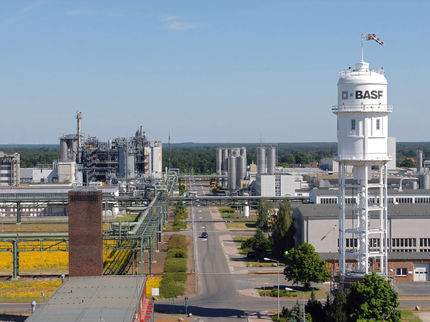New flame-retardant polyamides and polyesters
Huge potential for application in the electrical/ electronics sector and in transport and construction
Leverkusen - Excellent flame retardance is offered by a range of new Durethan® polyamides and Pocan® polyesters, including halogen-free materials, currently being launched onto the market by Bayer. "In developing these grades we have set great store on ensuring that the products also offer outstanding electrical and mechanical properties," explains Dr. Michael Wagner, research expert with the plastics Business Group. This approach has certainly proved successful in the case of Durethan DP 2- 1851/30 (PA 6) and Durethan DP 2-2851/30 H1.0 (PA 6.6). The formulations used for the glass fiber-reinforced polyamides have been specially developed for use in electrical/ electronic applications. The fire safety properties, based on the use of organic bromine compounds, ensure very good flame retardance, even with low wall thicknesses, as confirmed by the two most important tests in this area, the stringent US test standard UL 94 V (Underwriter Laboratories) and the glow- wire test.
Both polyamides achieve the top rating of V-0 in the UL 94 V-Test with a test piece thickness of a mere 0.8 millimeters. This test involves taking five specimens and applying a flame from a Bunsen burner at a pre-defined distance for two ten-second intervals. The shorter the period for which the specimen continues to burn once the flame has been removed, the better the rating given to the material. Additionally, the material should not form drops whilst burning.
Both polyamides also achieve the top ratings in the glow-wire test according to the GWFI (glow-wire flammability index). This involves pressing a heated wire against a test piece – such as a round disk – for 30 seconds. The temperature at which the burning test piece extinguishes itself within 30 seconds of the glow-wire being removed is then calculated. Additionally, a piece of tissue paper placed underneath the test piece must not be set alight by any drips from the specimen or glowing parts. Both polyamides meet the requirements even at the maximum glow-wire temperature of 960 °C.
In terms of ignition behavior, Durethan DP 2- 2851/30 H1.0 is one of the few products on the market actually to exceed the more stringent requirements of the glow-wire test according to the GWIT (glow-wire ignition temperature), a test standard currently being used specifically for plastic components of household appliances. The test piece is held in contact with a glow-wire for 30 seconds, a situation designed to simulate such situations as a defective electric cable. If it ignites, the test piece must not burn for any longer than five seconds. "Our product not only passes the test at a glow-wire temperature of 750 °C (GWIT 775 °C) but also manages to do so at temperatures in excess of 800 °C, thus offering a considerable degree of added built- in safety," adds Wagner proudly. "Only a handful of available polyamides can compete with that kind of performance."
Meanwhile, the electrical properties of the polyamides are just as persuasive. Their tracking resistance according to CTI A (comparative tracking index), at over 400 volts, is remarkably high when measured against comparable bromine-containing products, making them suitable for many different areas of application. The high level of tracking resistance prevents any flow of electricity between live metal components via the insulating plastic surface, a situation that could lead to short-circuiting or cause a fault.
A polyamide for improved safety during travel The fact that the use of flame-retardant polyamides does not have to be restricted to the electrical/electronic segment is proved by Durethan DP 2-1801/30 H1.0 (PA 6). The flame retardance of this thermoplastic, which is reinforced with glass fibers (30 %), is achieved without the use of halogens, so that this strong all-rounder also offers particularly good low-smoke properties in the event of a fire. This strength makes it the ideal material for transport applications such as seat trims or interior components of rail vehicles. In fact, this is an area for which the material has already clearly demonstrated its suitability – namely in DIN 5510 tests conducted at Bayer's fire testing center in Leverkusen which is officially recognized by Germany's Federal Railway Agency. Moreover, the material also complies with the crucial BI rating used in the construction industry, opening up scope for additional applications in the building sector.
Halogen-free polyesters – corrosion resistant and colorfast Halogen-free, flame-retardant polyesters for electrical/electronic applications continue to be a rarity. "This is an area in which Bayer has developed two genuine alternatives to standard grades containing halogens, namely the glass fiber-reinforced (30 %) PBT/PET blend Pocan® DP 4035 and the non- reinforced polybutylene terephthalate (PBT) Pocan® DP 2004," explains Wagner. Both thermoplastics excel thanks to their wide range of high-performance properties. For example, the formulation has been developed for optimum corrosion resistance. This means that after aging, even at high temperatures, as good as no volatile components are released that could settle on and attack metal contacts. This improves both the durability and safety of electrical appliances. The fire behavior of both thermoplastics is also impressive. The materials comply with the UL 94 rating of V-2 and pass the glow-wire test according to the GWFI at 960 °C. Pocan DP 4035 also displays high arc resistance and good properties in the hot-wire ignition test (HWI), which looks at the ignition behavior of the material when heated by means of overload. The tracking resistance of this grade, at more than 400 volts (CTI A), is also substantially higher than that of comparable materials containing halogens.
Both new polyesters only discolor very slightly when subjected to heating, so that bright components retain their attractive appearance even after long-term use. From an ecological perspective, they are also exemplary materials, fulfilling the requirements of such well-known environmental standards as the "Blauer Engel", the EU's environmental seal and TCO 99. Potential applications include, for example, supports or covers for electrical safety switches.





























































